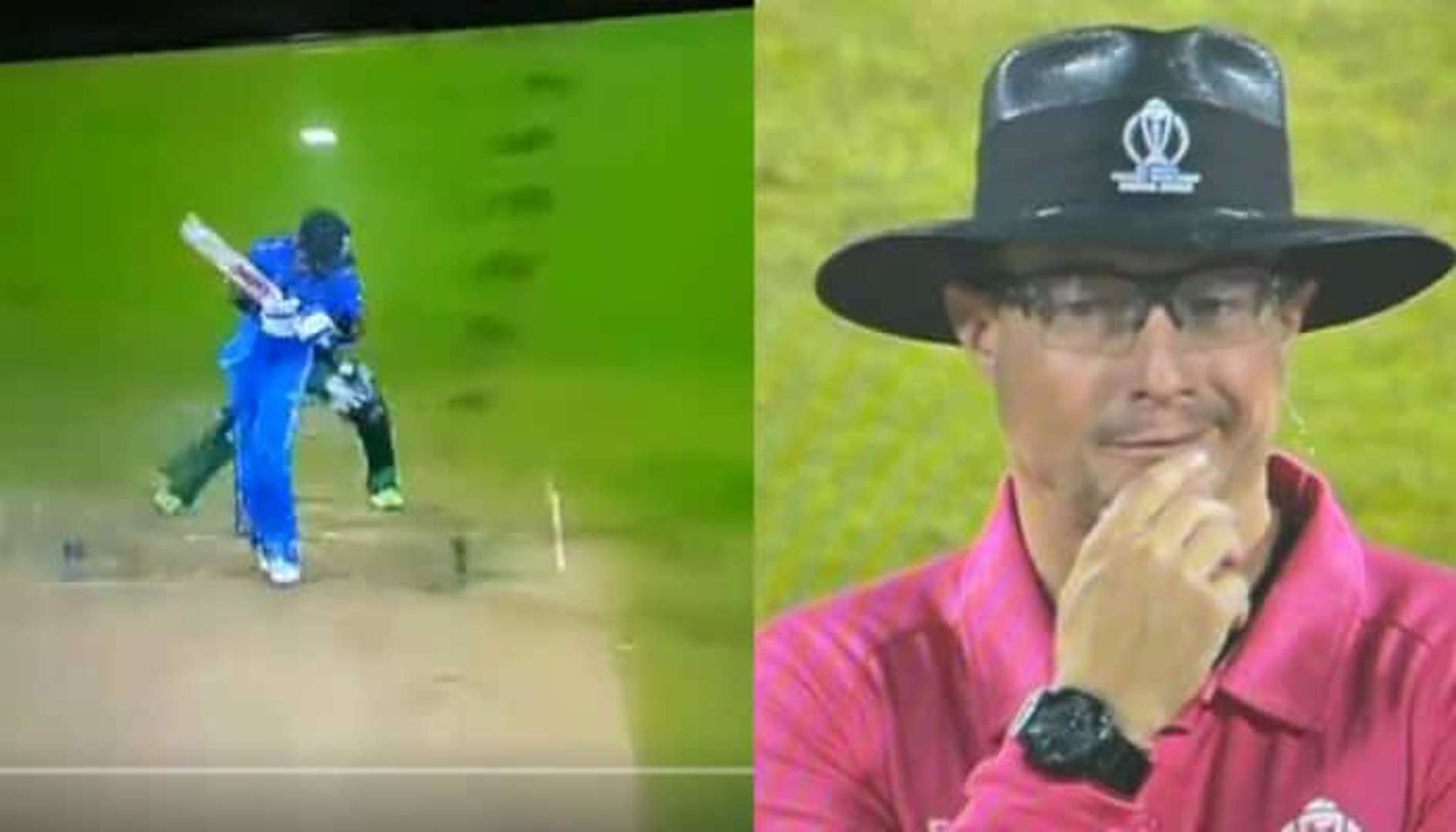Controversy erupted after the 18th match of the 2023 Cricket World Cup ended when India’s Virat Kohli hit a six to reach his hundred in what turned out to be the last ball of the match against Bangladesh. 2 runs needed from 9 overs. Kohli struck in Nasum Ahmed’s 42nd over. The first ball went down the leg side but was not called a wide.
The Indian dressing room laughed when Kohli was on 97 and that non-wide enabled him to score a hundred from two balls later. Judge Richard Kettleborough did not give a wide berth. The fact that he smiled as soon as he sent it over a non-wide put him in the soup as fans on social media believed he did it on purpose to see Kohli complete his 48th ODI ton. But was it really so?
There isn’t an official statement from the umpire available. However, there might have been a reason Kettleborough declined to give a wide that particular occasion. It might have something to do with last year’s legal changes.
Watch the controversial non-wide bowled to Kohli below:
The law in MCC Laws of Crcket 22.1.1 specifies how a wide should be evaluated. The law states that if a bowler bowls a ball that is not a no ball and it passes wide of the striker’s position and would have passed wide of the striker if the bowler had been in a normal guard position, the umpire will declare it to be a wide.
The ball will be deemed to have passed wide of the striker unless it is sufficiently within reach for him to be able to hit it with the bat using a standard cricket stroke, according to clause 22.1.2.
In March of last year, the MCC announced a new law that also affected clause 22.1. This change went into effect on October 1st.
“More than ever in today’s game, batsmen are moving laterally around the crease before the ball is bowled,” MCC said in a statement. – It seemed unfair that a delivery could be called “wide” if it passed where the batsman was standing when the bowler took his delivery step.
“Consequently, Law 22.1 was amended so that the width applies to where the batsman is standing, where the batsman was standing at some point after the bowler began to run, and who in the normal batting position would have passed the striker.”
Let us now discuss the non-wide incident in the case of Nasum vs Kohli. Kohli wanted to increase his chances of hitting a boundary, so he positioned his right foot outside the leg stump in this instance. In an attempt to avoid being hit for a boundary and six, Nasum attempted to bowl into Kohli. Kohli shuffled back to his regular guard position as the ball went down the leg side.
Umpire Kettleborough most likely did not call it a wide because of the amended legislation. The crowd’s cheers for the decision with Kohli on 99 may have caused the umpire to smirk, realizing that his non-wide had made them even happier. That smile might have more to do with the circumstances.




